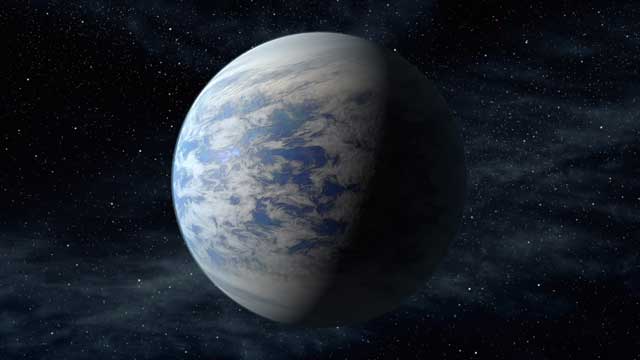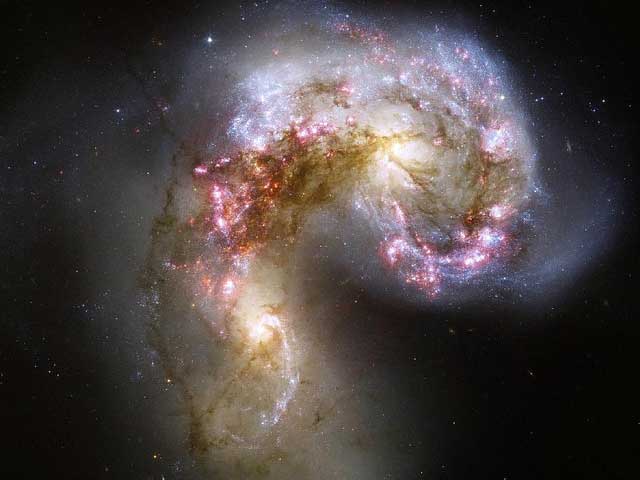Are there any aliens?
Let’s first clarify the concept we think of as aliens. Alien is a way of life with an extraterrestrial source. There are different predictions between organisms hypothetically similar to bacteria and organisms with a more developed consciousness and civilization than humans.
Although many scientists believe the existence of extraterrestrials is possible, there is no conclusive evidence yet. Living remains are also studied on meteorites that hit Earth.
Intelligent aliens have been studied since the mid-twentieth century. Planets outside the solar system are studied with radio signals and telescopes. Science fiction and Hollywood movies have sparked the curiosity of extraterrestrial creatures.
Photo: Temari 09 / flickr
Livable area
Since the 1950s, scientists have advocated the idea that life could exist on planets in the “habitable zone” around stars. Structurally, Earth-like planets built since 2007 have given us a more accurate idea of the frequency of such planets in the universe.
Habitable field is the regions where planets and space-like objects with a stellar atmosphere can hold liquid water on their surfaces. The distance of this region from the star depends on the type of star.
Astronomers according to data collected by the Kepler space mission on November 4, 2013 40 billion Earth-like planets in the Milky WayThey explained that there were “habitable spaces” around sun-like stars and red dwarfs. They showed that 11 billion of these planets could be Sun-like stars. The closest to these stars is 12 light years from Earth.
Photo: Wallpaperup
Are there any aliens in the solar system?
There are some space objects that have the potential to live in the solar system. These are the things that are believed to have particularly underground oceans. Experts believe that even if some form of life was found in the solar system, it would be microorganisms.
National anthem
Many predictions have been made about life on Mars in the past. According to popular belief, there was liquid water on Mars in the past, and today there are findings from Mars soil surveys that may confirm this.
It has been shown in the past that Mars was much warmer and humid, and dry water and mineral currents formed when water was found on Earth.
Some experts believe that some underground regions on Mars may harbor microbial life.
Ceres
Ceres is a dwarf planet in the asteroid belt between Mars and Jupiter. It has a fine atmosphere of water vapor, according to observations made by the Herschel Space Observatory. It is believed that bright areas on the frozen surface could be ice. The presence of water also made life possible on the dwarf planet Ceres.
Europa
Jupiter’s moon Europa is considered to be an object in the solar system with the most likely environment for life outside of Earth, as it most likely has an underground ocean. This ocean is expected to contain multicellular microorganisms. This possibility became even stronger after the discovery of very large lakes beneath the frozen surface in 2011. In 2025, a research tool will be launched to check the suitability of Europe, where life in the solar system is most likely.
Titan
Titan is Saturn’s largest moon. Titan is also the only satellite in the solar system to have a significant atmosphere. Liquid hydrocarbon lakes have been identified in the polar regions. It is the only space object other than Earth that has a liquid on its surface. According to one hypothesis, organisms that consume hydrogen, meat and ethane and produce methane can be found here.
There are also hypotheses that even if there is life in the solar system, it will originate from the Earth.
search methods
Research aimed at finding potential life in space can be classified in two different ways as direct and indirect research.
The research scientists conducted by examining the surfaces of planets and meteorites in the solar system falls directly into the category of research.
Smart Living Extraterrestrial Research (SETI) Similar indirect investigations in the galaxy are looking for signals from interstellar electromagnetic communication that could originate from other civilizations and worlds. However, even if there are extraterrestrial organisms in space, there is no guarantee that they will send radio communication waves to Earth that humans can see. Even if these signals reach Earth, it may take a long time for these signals to reach Earth, and the signals will come from the distant past.
Planet exploration
Some astronomers are looking for planets outside the solar system that may contain extraterrestrial organisms. As a result of observations made in this direction, 1977 extrasolar planets were discovered between 1992 and November 1, 2015. These include rocky, Earth-like planets as well as gas giants like Jupiter. The number of planets observed is expected to increase exponentially in the coming years.
The Kepler Space Telescope has observed 3,600 candidate planets, including 1,100 connected planets. It is thought that 11 percent of these could be false positives. As a result of the observations made, it has been seen that the average number of planets is around at least one star.

Photo: Kepler 69c / NASA
Is there life in space?
It has been observed that one-fifth of sun-like stars have an Earth-size planet in their habitable zone. The closest to Earth is 12 light years from us. Considering that there are 200 billion stars in the Milky Way galaxy, it can be said that the number of Earth-like planets in the habitable region can reach 11 billion. If you include red dwarf class stars, that number reaches 40 billion.
According to the Drak equation and observations of the Hubble Space Telescope There are at least 125 billion galaxies in the observable universe. Worst of all, at least 10% of Sun-like planets have a planetary system. Accordingly, 6.25 x 10 in the known universe18 There is a star similar to the sun with its planetary system. Considering that one billion of these systems could have life, then it can be observed. In a 6.25 x 10 universe9 There is a planetary system suitable for life. However, no evidence has yet been found on this issue.
The contradiction that the probability of extraterrestrial life is very high, but there is no evidence for this. Fermi paradox Also known as.
[ad_2]
Source link


